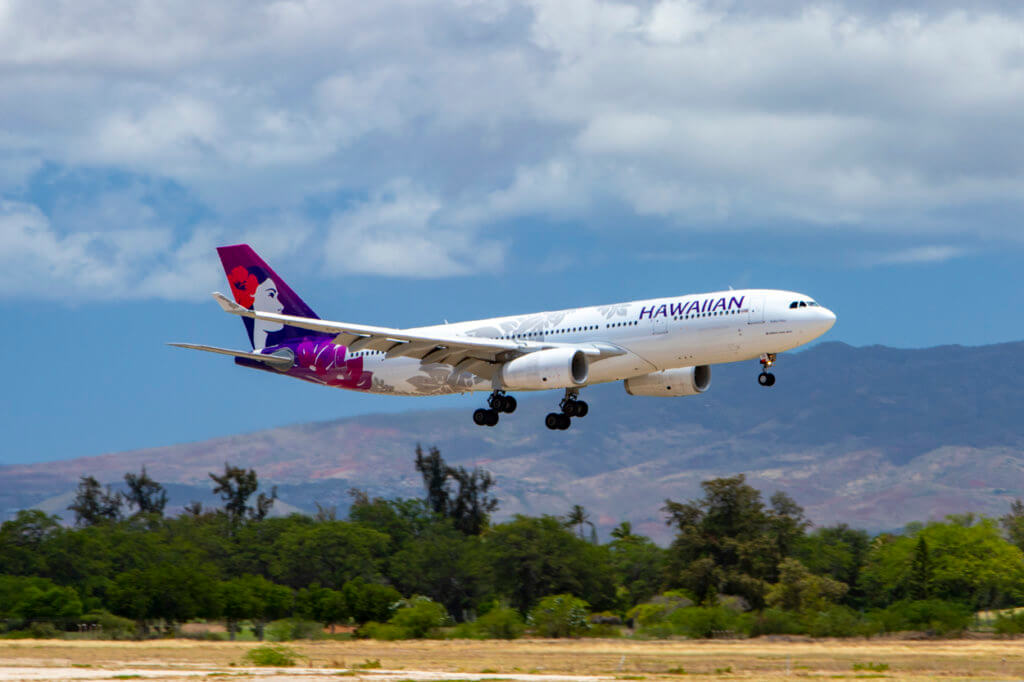So far, Hawaii allows pre-travel testing only for travelers from the mainland US and Japan. That will soon change, though, as Hawaii adds South Korea to the Safe Travels program. But, much like the Japanese program, don’t expect South Korea’s inclusion to make an appreciable economic difference.
Hawaii Adds South Korea to Safe Travels Program
As a refresher, the Safe Travels program is Hawaii’s pre-travel testing program. And no matter where travelers are originating from, participants in the program must adhere to specific requirements. As of this writing, those requirements include:
- obtain a test from an approved testing partner
- the test must be taken within 72 hours of departure
- results must be uploaded to the Safe Travels app before boarding your flight
- you must have negative test results to travel
If you meet all of the above criteria, then you can avoid Hawaii’s mandatory 10-day quarantine on arrival.
These rules will apply to travelers from South Korea as well. And travelers from South Korea become eligible for program participation beginning on February 5.
Approved Testing Partners
So far, only four testing partners have been approved in South Korea. Those partners include:
- Yonsei University Health System, Severance Hospital
- Kangbuk Samsung Hospital
- Inha University Hospital
- Asan Medical Center
Unlike Japan’s approved testing site’s Korea’s aren’t all centered around its capital city. In fact, Yonsei is the only one in Seoul proper. Kangbuk Samsung Hospital is in Suwon, Inha University Hospital is in Incheon, and the Asan Medical Center is in Asani.
Why Adding Korea Won’t Make a Difference
I’m sure some Koreans will make their way to Hawaii when Hawaii’s Safe Travels program launches there. But, Koreans are more conscientious than Westerners. That’s why South Korea has, overall, been able to control the virus so well. And that’s also why most will refrain from any unnecessary leisure travel until the pandemic has passed.
What’s more, Hawaiian Airlines is the ONLY airline currently flying between South Korea and Hawaii using a massively reduced schedule. Currently, Hawaiian flies between Seoul-Incheon and Honolulu just once per week. Though, that ramps up to five times per week in March. But flight availability isn’t everything. After all, as we’ve seen with Japan, most flights, regardless of the carrier, arrive with extremely lean load factors.

Hawaii Adds South Korea to Safe Travels Program, Final Thoughts
With cases surging in Asia, Korea included, and the possibility of strict federal restrictions coming into play, I wonder what the reasoning behind adding Korea to the program now was? I’m not saying we shouldn’t, especially since we have a large Korean population in Hawaii. But the time just seems a bit off if you ask me. Then again, much of Hawaii’s timing with all things COVID-related has been, in my opinion. Either way, I’ll be interested to see how the numbers evolve. And, as I’ve said earlier in this post, I’m fairly certain we’ll see very similar results with Korea as we’ve seen with Japan.

Wow, making a few ethnicity-based generalities, are we? An less ethnicity-based comment might have included that all arrivals in South Korea are required to quarantine regardless of national passport, which creates an incentive not to leave the country just to deal with 14-day restrictions upon return. That might have something to do with COVID infection rates too. Seriously, this was a good post until you veered off into conjecture on why the change does not matter. 30,000 US troops and their families in South Korea. Some of them might like a warm bit of ROR.
It is a known fact that Asian cultures are more conscientious than western ones. This is why mask-wearing while sick has always been the norm, particularly in Japan and Korea, and why there was little resistance to virus control efforts in those countries. Unfortunately, the State of Hawaii doesn’t give any guidance on how Safe Travels impact US service personnel stationed overseas.
Doubling down on stereotypes. Please visit South Korea (or Japan) and post what you find. Think you’ll be surprised. It’s not all about masks or following instructions.
Actually, all four testing sites are in Seoul metro. Asan Medical Center is in Seoul right by the Han River (not in Asan-si) and Kangbuk Samsung has a Seoul address on Google. Inha is in Incheon, true, but that’s part of Seoul Metro; Inha is closer to the center of Seoul than Incheon airport.
Hah! I had a feeling I should’ve used Google over Bing. Thanks for the correction.